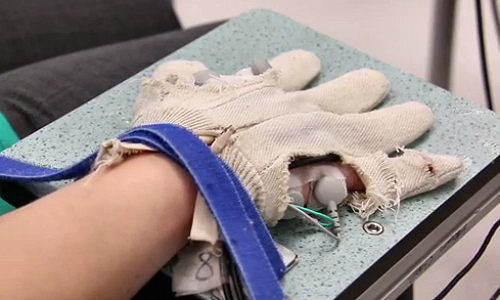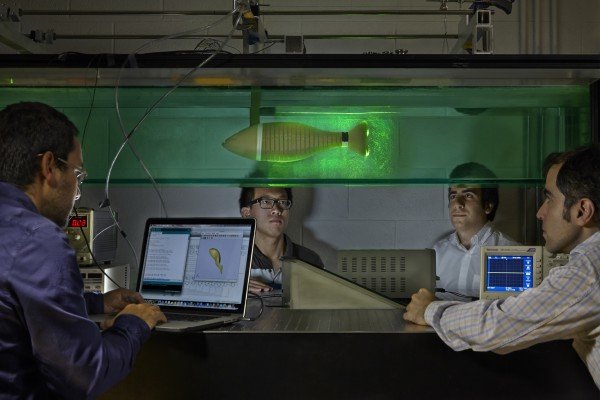For the first time scientists have been able to restore the ability to grasp with a paralysed hand using spinal cord stimulation.
There is currently no cure for upper limb paralysis, where there has been damage to the nerves which send messages to the muscles from the brain, such as happens after a stroke or spinal injury.
But now Wellcome Trust-funded researchers at Newcastle University, working with macaque monkeys, have shown that by connecting the brain to a computer and then the computer to the spinal cord, it is possible to restore movement. The discovery opens up the possibility of new treatments within the next few years which could help stroke victims or those with spinal cord injuries regain some movement in their arms and hands.
Spinal cord stimulation
The team first trained the primates to grasp and pull a spring-loaded handle. The monkeys were then temporarily paralysed, using a drug that wore off after about two hours. During that time the monkey had no movement in their hand and was unable to grasp, even though most of the brain was functioning normally. But when the stimulation circuit was switched on the monkey was able to control its own arm and pull the handle.
The work is published today in the journal Frontiers in Neuroscience. A video shows the technique in action.
Dr Andrew Jackson, Research Fellow at Newcastle University and Dr Jonas Zimmermann, now at Brown University, Providence, Rhode Island, USA, led the research.
Dr Jackson said: “When someone has a damaged motor cortex or spinal cord the problem is that the signal from the brain to the muscles isn’t getting through. What we have done here is restore that connection, to allow the signal telling the hand to move to reach the spinal cord. By exploiting surviving neural networks below the injury, we can activate natural actions like grasping using just a few stimulation sites. This is the first time that anyone has done that.”
The next stage will be to further develop the technology to eventually have a small implant for use in patients that can then form the link between the brain and the muscles.
Restoring hand movement
Dr Jackson added: “Much of the technology we used for this is already being used separately in patients today, and has been proven to work. We just needed to bring it all together.
“I think within five years we could have an implant which is ready for people. And what is exciting about this technology is that it would not just be useful for people with spinal injuries but also people who have suffered from a stroke and have impaired movement due to that. There are some technical challenges which we have to overcome, as there is with any new technology, but we are making good progress.”
Dr Zimmermann said: “Animal studies such as ours are necessary to demonstrate the feasibility and safety of procedures before they can be tried in human patients, to minimise risk and maximise chance of successful outcomes.”
Story Source:
The above story is based on materials provided by Newcastle University.





